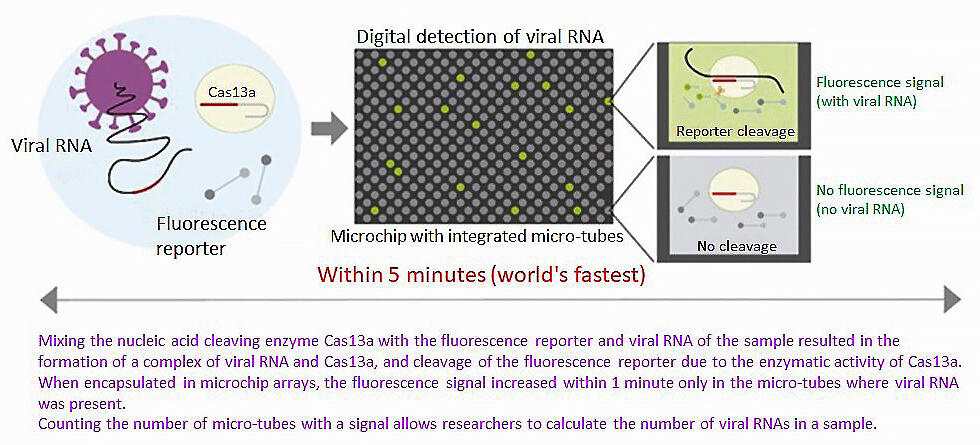An innovative technique, which can identify and detect RNA derived from the novel coronavirus (SARS-CoV-2), has emerged. The virus, which has caused worldwide suffering, can be detected at the single-molecule level in less than 5 minutes. A research group led by Dr. Watanabe and colleagues at the RIKEN Cluster for Pioneering research was involved in the development of this technique.
This method, named the SATORI method, combines the detection technique of single-molecule enzymatic reactions using a microchip and advanced techniques using the nucleic acid-cleaving enzyme CRISPR-Cas13a. A mixture of Cas13a and fluorescence reporters, which recognize specific RNA sequences, was used as a biosensor to detect the presence or absence of target viral RNA rapidly, sensitively, and accurately.
Predominant PCR diagnostics for new coronavirus infections are time-consuming, and antigen testing is less sensitive than the SATORI method. Because the SATORI method solves these issues and has lower running costs, it has the potential to be the mainstay of next-generation infectious disease diagnostics. It can also be used to detect disease biomarkers. Diverse applications are expected, including the development of technologies for early diagnosis of cancer and other underlying diseases. Technologies for SATORI have already been patented. Research groups are working in collaboration with companies and are aiming to begin clinical trials in the 2022 fiscal year.





